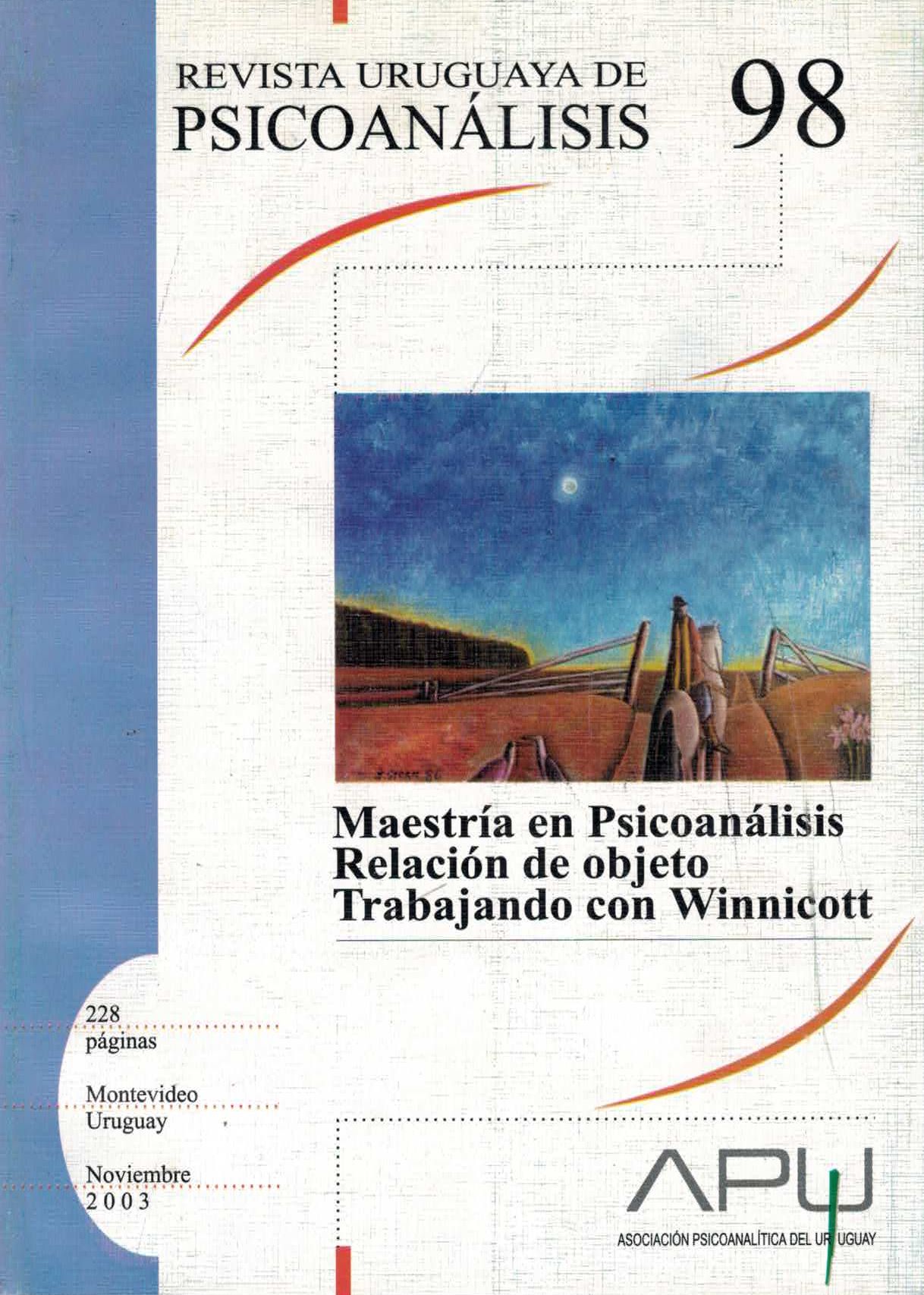The paradox of organizing destruction
Keywords:
agresión, destrucción, simbolización, interpretación, desamparo, uso del objeto, cambio, material clínicoAbstract
The author’s intention is to take Winnicott’s paradoxical ideas on aggression and des truction and combine them with the notions on the use of the object. Thus, the author intends to reflect upon moments that are essentially
dynamic, both of psychic structuring and of transference work and production. They are constitutive elements which determine ideas of loss and substitution included in “the use of the object”. Their high degree of abstraction enables us to place them in view of symbolisation as a nuclear part of neurosis. At the same time, for Winnicott, the ideas of health and sickness depend
on how the “other one” responds to aggression and destruction. For want of, there stems the violence of helplessness, which leaves the person without symbolic and structuring resources. The author tries to approach Freud’s and Winnicott’s ideas on “destruction” in its vital function of “cutting out” (possession for Winnicott, seizure in Freud) and also assesses Freud’s idea on the death
impulse as enabling life. This piece of work gives a special importance to Winnicott’s idea that the motion will or won’t be destructive depending on the answer received by the “other one”. This strongly reverts a geneticist view. It is an explanation on the
function of the “other one” (his unconscious drive as “other one”) in his course to the impulse.
Downloads
References
CASAS de PEREDA, M. (1999). En el camino de la simbolización, Producción del sujeto psíquico. Bs. As, Paidós, 1999.
FREUD, S. (1905-a). Tres ensayos de teoría sexual, en Obras Completas T. VII. Bs.As, Amorrortu, 1976.
————— (1905-b). Más allá del principio del placer, en Obras Completas T. XVIII. Bs.As, Amorrortu, 1976.
————— (1923). El yo y el Ello, en Obras Completas T. XIX. Bs.As, Amorrortu, 1976
————— (1925). La negación, en Obras Completas T. XIX. Bs. As, Amorrortu, 1976.
————— (1937-a.). Construcciones en el análisis, en Obras Completas T. XXIII. Bs.As, Amorrortu, 1976.
————— (1937-b).Carta a Marie Bonaparte, en: Jones, E.: Vida y Obra de Sigmund Freud, Apéndice A, Bs. As, Nova T. III, 1962.
MILNER, M.(1965).. El papel de la ilusión en la formación de símbolos .En: Melanie Klein et al. Nuevas direcciones en psicoanálisis”, Bs. As, Paidós.
WINNICOTT, D. W. (1939). De la agresión y sus raíces. En: Deprivación y Delincuencia. Bs.As, Paidós, 1990.
————— (1950-1955). La agresión en relación al desarrollo emocional. En: Escritos de pediatría y Psicoanálisis, Barcelona, Laia, 1979.
————— (1952). Carta a Roger Money-Kyrle. En El gesto espontáneo.Bs.As, ————— (1954-1955) . La posición depresiva en el desarrollo emocional
normal. En: Escritos de Pediatría y Psicoanálisis. Barcelona, Laia, 1979.
————— (1956). La tendencia antisocial. En: Escritos de pediatría y psicoanálisis. Barcelona, Laia, 1979.
————— (1965). Notas tomadas en el tren. En: Exploraciones psicoanalíticas, T. I. Buenos Aires, Paidós, 1993.
————— (1968). El uso de un objeto y la relación por medio de indentificaciones. En: Realidad y juego. Bs.As, Granica, 1972.
————— (1969). El uso de un objeto en el contexto de Moisés y la religión monoteísta. En: Exploraciones psicoanalíticas T. I. Bs.As, Paidós, 1993.



 This work is licensed under a
This work is licensed under a 